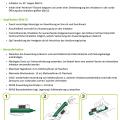The US Army Bacteriophage Therapeutics Program for the Treatment of Multidrug Resistant Wound Infections
Brett Swierczewski, Andrey Filippov, Anna Jacobs, Yunxiu He, Amanda Ward, Helen Freyberger, Emily Engeman, Samandra Demons, Derese Getnet, Stuart Tyner and Mikeljon Nikolich
Wound infections caused by multidrug resistant (MDR) Gram-negative bacteria to include the ESKAPE pathogens ( E nterococcus faecium, S taphylococcus aureus, K lebsiella pneumoniae, A cinetobacter baumannii, P seudomonas aeruginosa , and E nterobacter spp) are a persistent challenge as antibiotic treatment options become limited and the development of new antibiotics more rare.
New solutions for military relevant bacterial infections

The exploration of new alternative therapeutics to include the use of bacteriophages, viruses that infect, replicate and kill bacteria, is of critical importance for treating MDR wound infections. The use of bacteriophages for the treatment of bacterial infections has been used for over a century, but only recently has their use reemerged to the international medical community as there have been sev eral recent cases of success of the use of bacteriophages for the treatment of MDR infections.
Read the detailed article here.
Datum: 03.08.2020
Wehrmedizinische Monatsschrift 6-7/2020













